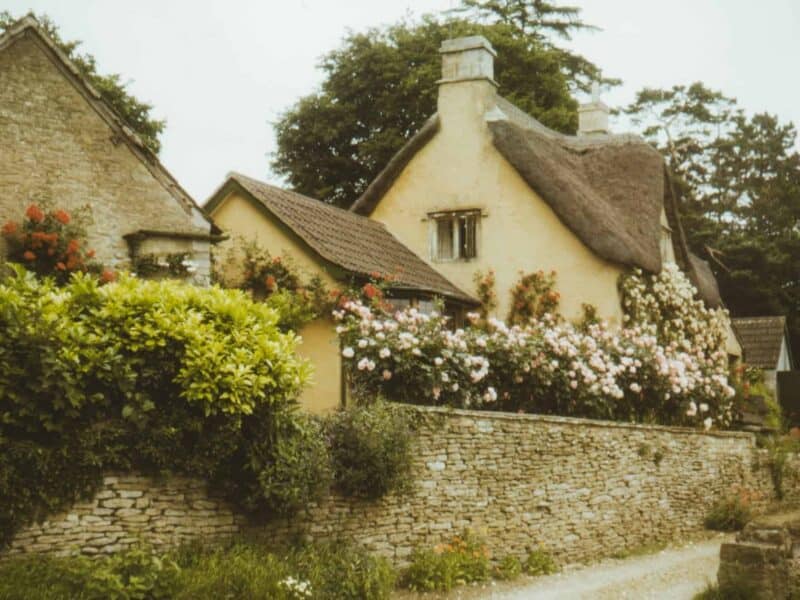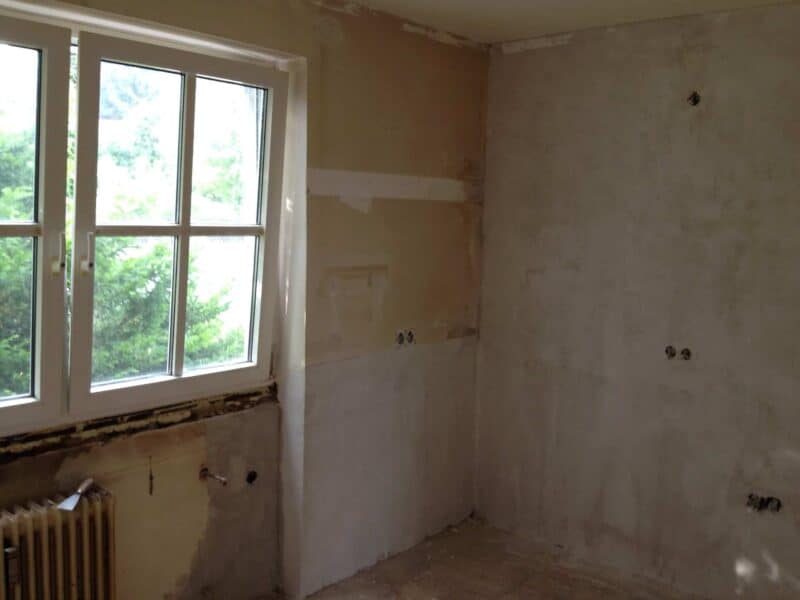
In the period immediately after the Second World War the prevailing trend in design was fast, sleek and aerodynamic, representing an age when technology was going to be the driving force.
The way this translated into interior design and the DIY market resulted in the ripping out of decorative mouldings and plasterwork to keep everything uncluttered.
For example, sheets of hardboard were nailed to interior doors to hide the panels and make the doors flush, smooth and streamlined.
Eighties Boom Takes it’s Toll
Although the technology spark died a little in the Seventies, at least with regard to house design, the house price inflation of the Eighties caused more damage to older properties.
Developers keen to make a quick buck ripped out windows in period suburban houses to install cheap and nasty aluminium double-glazing, then slapped woodchip wallpaper and artex everywhere to hide poor finishing.
Sophisticated Buyers Demand Accuracy
Today’s housing market is more sophisticated and even when a modern interior design has been applied to a house, designers are keen to keep, or if necessary reinstate, detail fittings that root the property to the correct period.
Increasingly, new build properties also have to incorporate period fittings (or accurate limitations) as planning restrictions prevent anything that clashes with the existing styles.
Exterior Giveaways
From the outside, it’s the doors and windows that are crucial. New developments in glues have made it possible for double-glazed units to imitate most older window styles, although the best looking ones are the most expensive.
If you are renovating for profit, you may have to strike a balance between authentic style and cost.
The roof and guttering also play a part. It makes sense to replace roof tiles with correct ones for the area and period.
Although it’s possible to repair cast iron guttering, there is a very large choice of plastic replacements on the market so it should be possible to get something close to the real thing.
Walls and Mortars
If you are embarking on a major renovation that means repairing or recreating walls, then try to find information locally about the right materials. English Heritage are just one of the many bodies who would be able to help identify the right choices.
Many older houses in the Cotswolds, for example, are now suffering from damp problems because the concrete mortar used in recent repair work (in the last 70 years) is not permeable. It also sets harder than the original lime mortar so slight movements in the building cause larger cracks in the walls.
Interior Sources
Inside the house it’s the details that set the house in it’s historic context. If your renovation project has already been gutted and you no longer know what to put back, a design source book for the relevant period will give you ideas, pictures and diagrams.
There will also be details of the paints, wallpapers and materials used on the walls and to dress windows. These books can be bought or borrowed from a local library.
But for many people a combination of keeping the original features while still having a modern, clean interior will be the aim.
If you’re really unsure and you’ve just moved into the area, see if neighbours with similar properties will let you have a look at their interiors.
Where to Find the Right Stuff
Sourcing materials can be a bit tricky. Wooden mouldings are easy to come by but decorative plasterwork will be very expensive, and polystyrene or MDF replacements will do the job, unless you’re a real stickler for accuracy and have loads of money.
Fireplaces, mantelpieces and other larger items can be found at architectural salvage yards, although just because it’s salvage won’t mean it’s cheap these days.
Sympathy Sells
One thing is for sure, if you can retain an original look and feel to your renovation, it will come through in more receptive buyers and a faster sale.
Sympathy and attention to detail is what people want to see and it will give your project an edge over others that have not been completed with such care.


